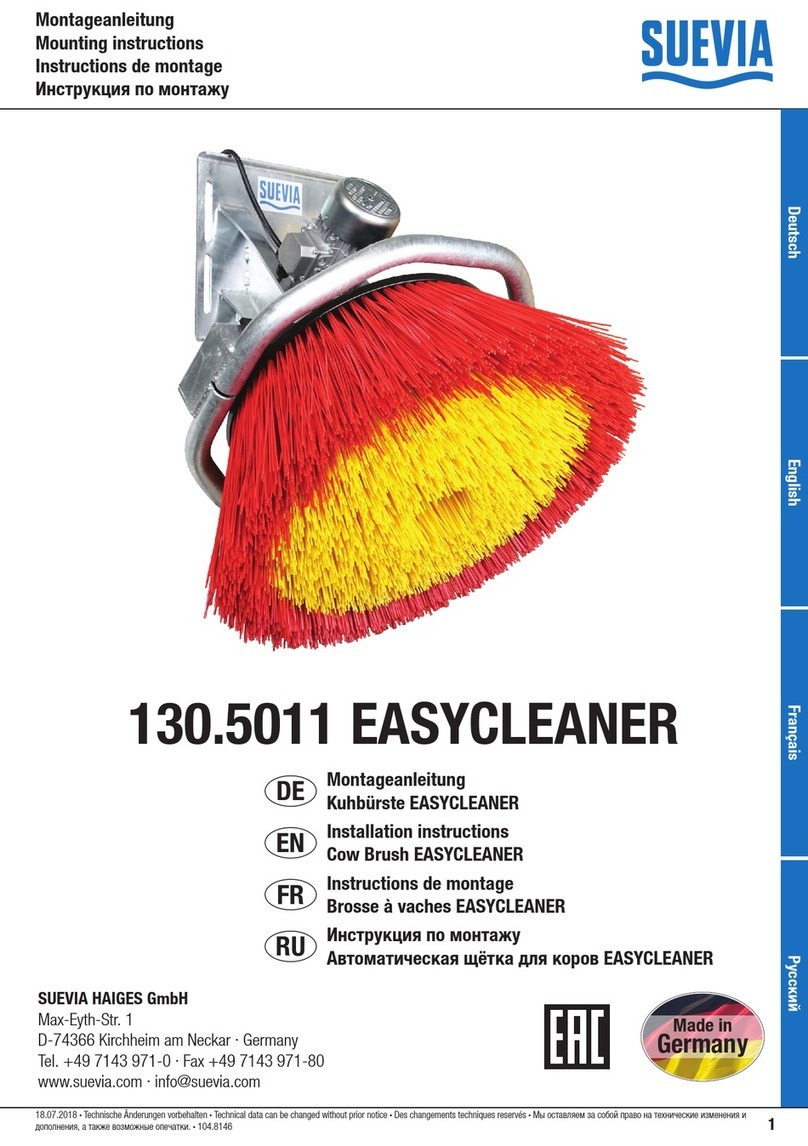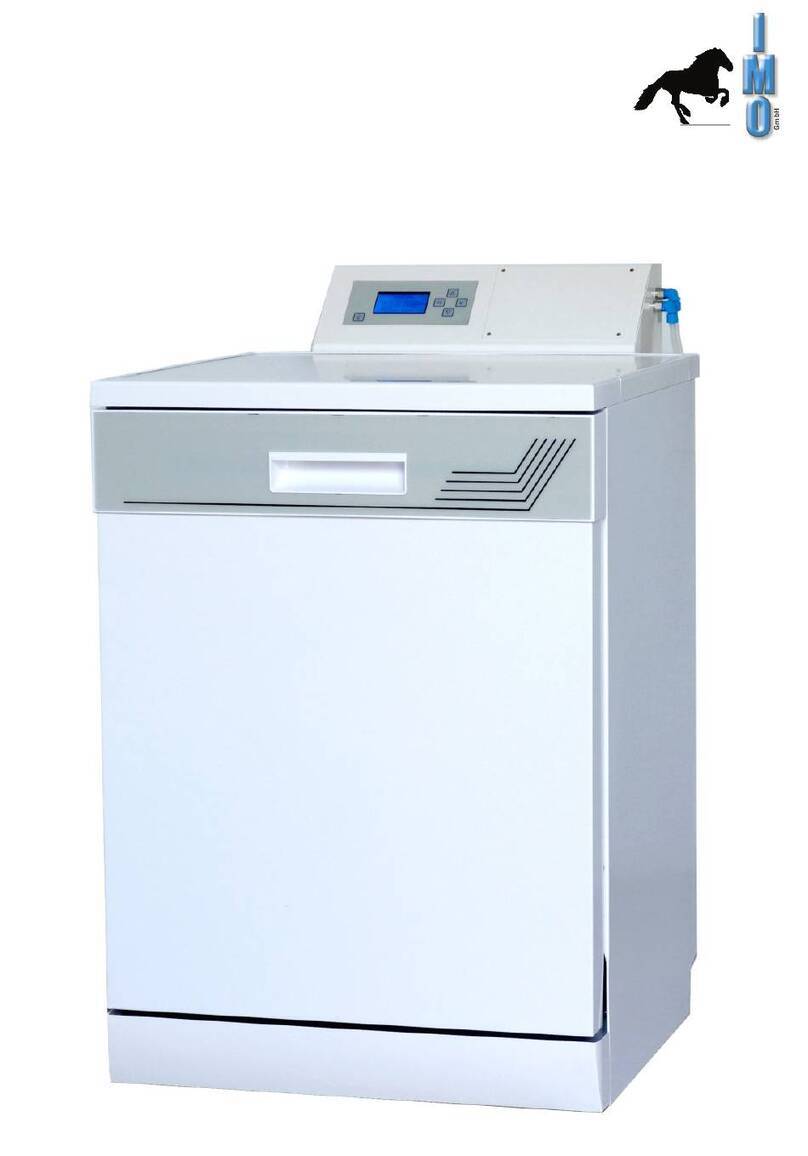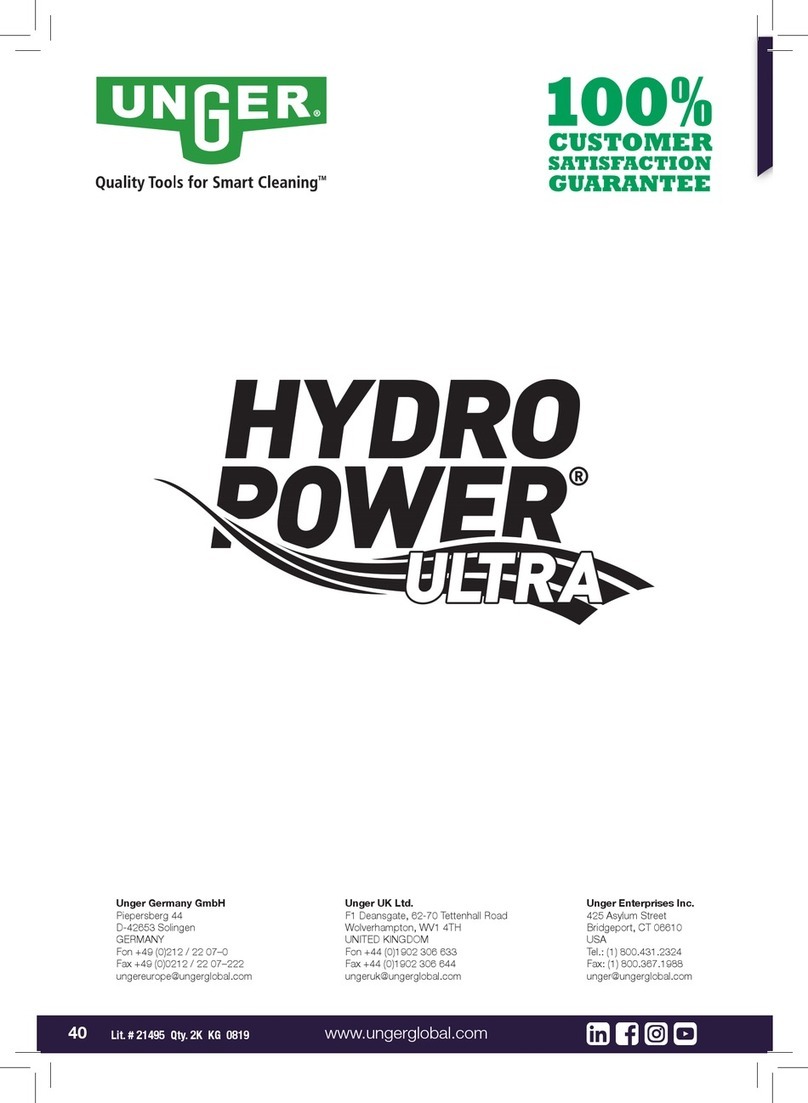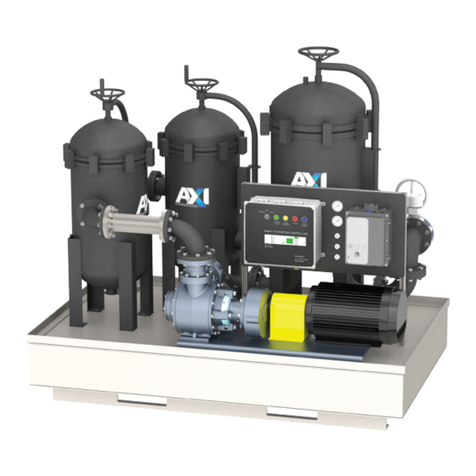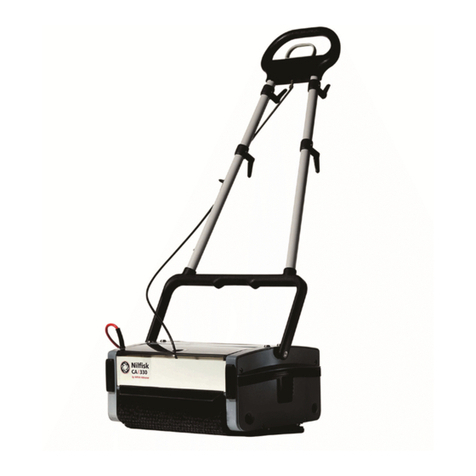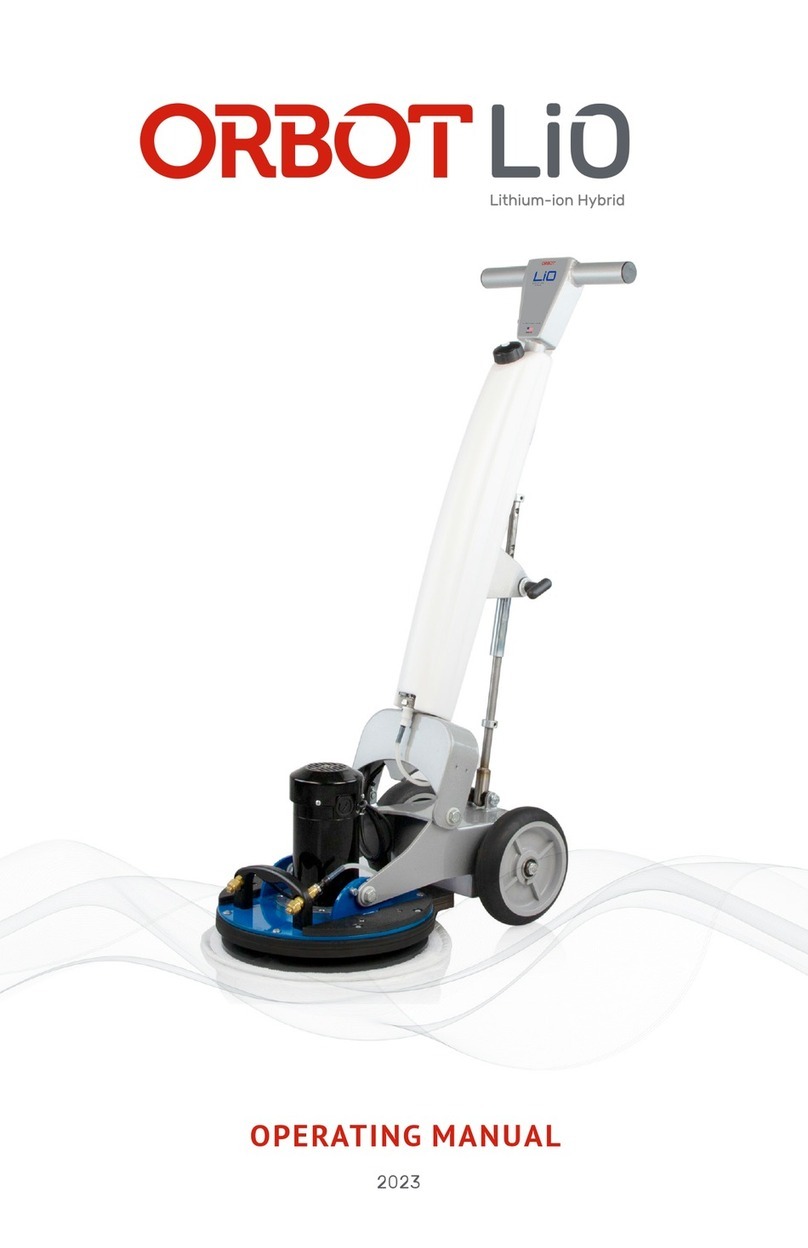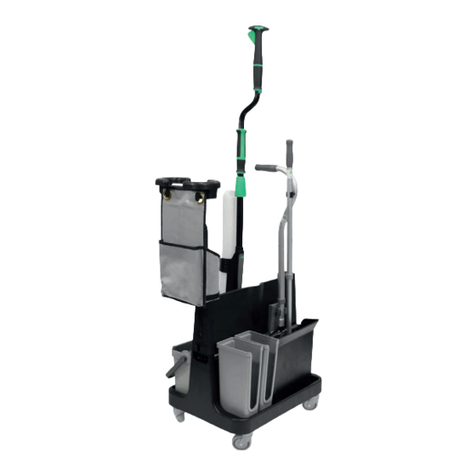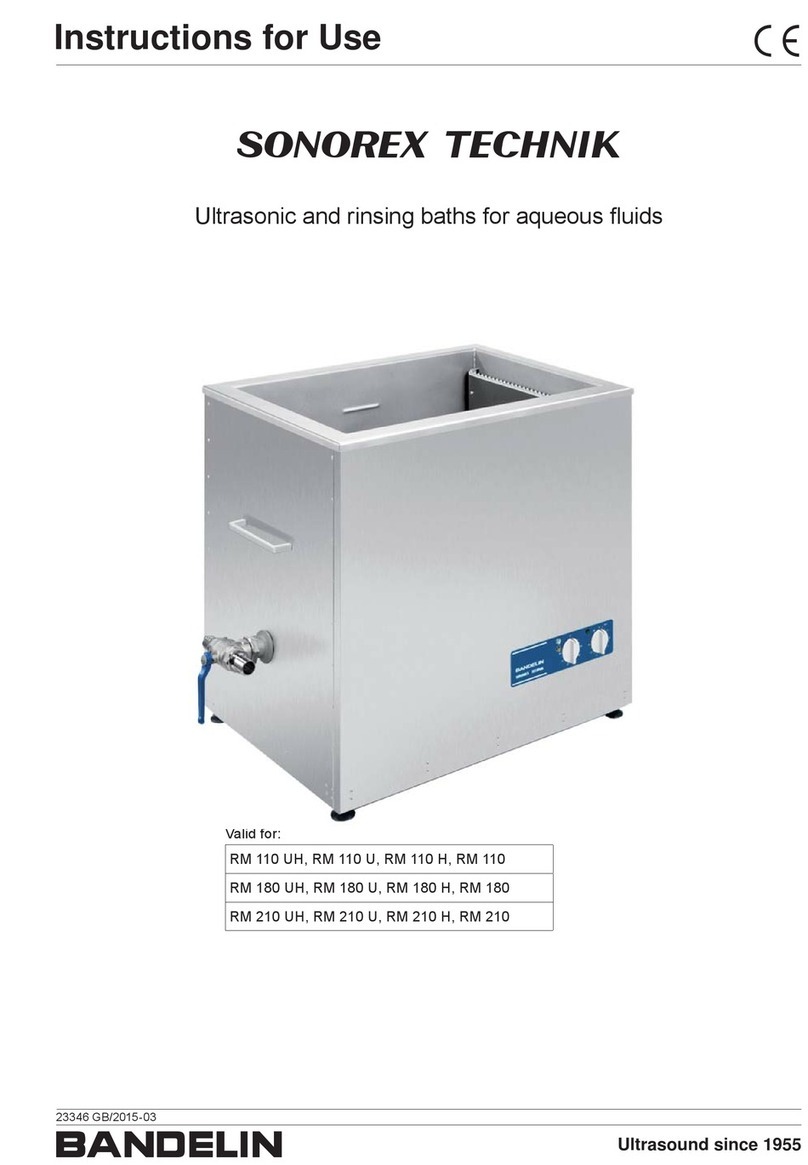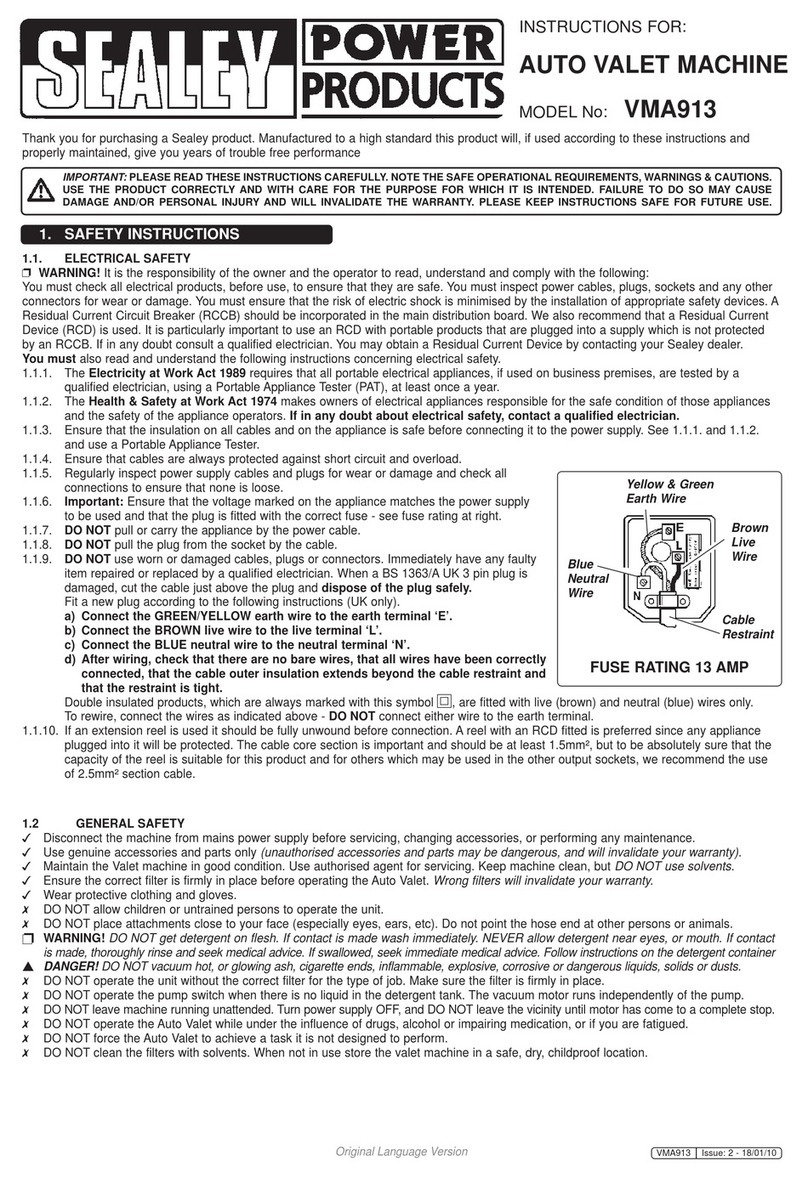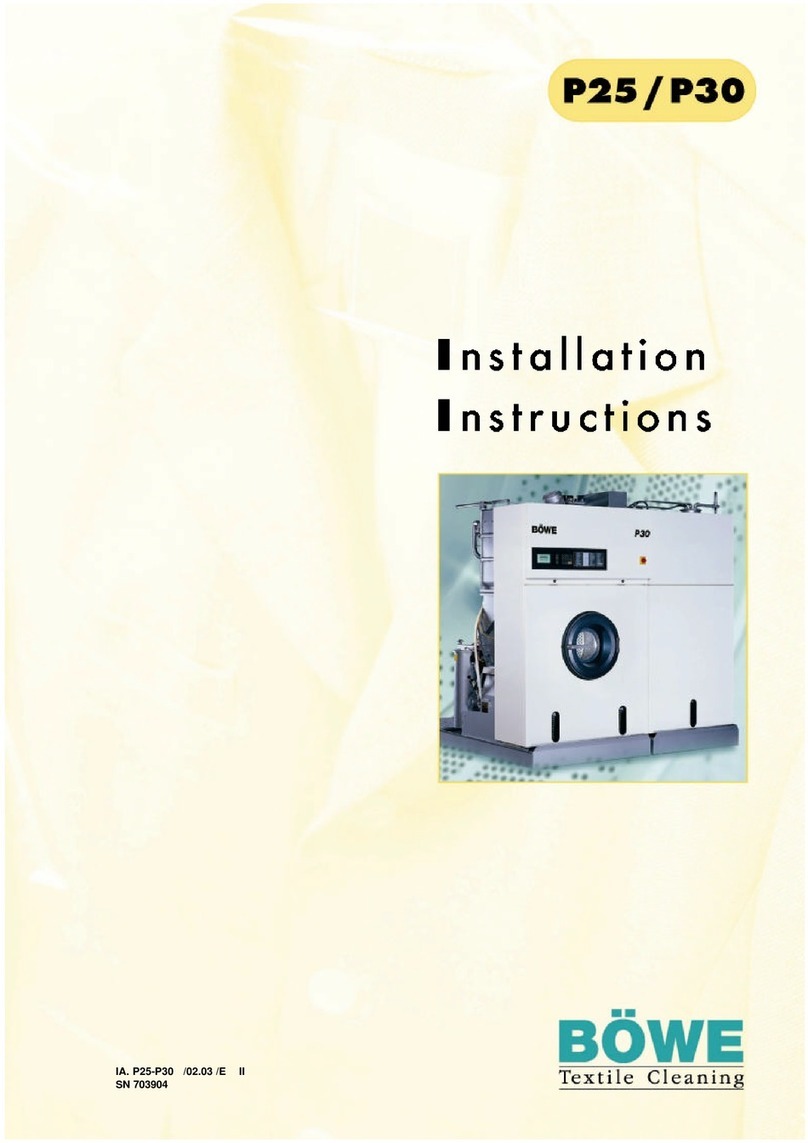clutch is instant-acting and returning clutch handle to
its original position frees cable instantly.
6. As soon as excess cable has gone into line,
release clutch handle and pull six to ten inches of
cable out of machine with mitted hand.
7. Continue to feed the cable into the line until
resistance or obstruction is encountered. This will
become apparent to operator as it will be difficult to
feed additional cable into line and/or the cable will
have a tendency to twist sideways in operator’s
hands.
8. If cable loads down in the obstruction, relieve load
by pulling back on cable with short, quick jerks to
free cutter. Slowly advance cable back into the
obstruction.
Repeat this process until the obstruction is clear.
Remember, make sure the cutter is rotating at all
times and never force the cable. At this point,
progress depends upon the sharpness of the tool
and nature of the obstruction.
WARNING
Do not allow tension to build up in the cable. This
will happen if the cutting tool hits a snag and stops
turning, but the motor and cable continue to rotate.
Torque builds until the cable suddenly twists,
potentially wrapping around your hand or arm. This
can happen quickly and without warning, so proceed
slowly and carefully as you feed the cable into the
drain. Releasing clutch handle will stop the cable
rotating and releases the torque. If tool gets hung up
in an obstruction, refer to Reverse Operating
Instructions in the “Special Procedures” section.
9. Once obstruction is cleared, it is recommended
that operator flush debris from line with running
water. Repeat Step 8 several times if necessary for
thorough cleaning job and then work cable through
additional stoppages as required.
10. To add cable, the following procedure should be
followed:
• After reaching the end of each cable section, turn
the machine OFF.
• Secure the cable by looping it in the line (Fig 5.)
Figure 5 – Looping Cable In Line
This procedure is especially useful when
cleaning a line that has rapid fall, such as
working from a stack line.
• With line secured, insert another section of cable in
through the front of the machine (female end first)
until approximately one foot remains out the front of
the machine.
• Attach cable to cable in line and resume operation.
11. To retrieve cable from drain line, the following
procedure should be followed:
• Leave FOR/OFF/REV switch in FOR (forward)
position.
• Push down on clutch handle to engage cable. With
mitted hand pull cable out of line (if possible) or hold
cable against edge of inlet to thread the cable out
until loop forms in front of the machine.
NOTE! By holding the cable against the edge of the
inlet, in the FOR (FORWARD) position, the rotation
will rapidly “thread” the cable out of the line.
• When loop forms, release clutch handle and push
excess cable back through machine. Disconnect
one section at a time. When disconnecting sections,
remember to turn unit off and secure cable in line.
• Once section of cable is removed, insert the
secured cable in through the front of the machine
and continue removing sections until tool on last
section of cable is just inside sewer inlet. Never
retract tool from sewer inlet while cable is rotating.
Tool can whip causing serious injury.
12. Turn FOR/OFF/REV Switch to OFF position.
